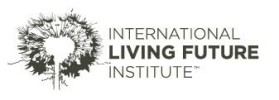This exception applies to electrical wires and cables and optical fiber cables that are insulated, jacketed, or both, and that are subject to fire codes NFPA 90A, NFPA 262 or UL 910, and/or proposed for use where applicable building codes require the use of fluorinated ethylene propylene (FEP) or polyvinyl chloride (PVC) compounds in wire and cable sheathing. Examples include wires and cables installed in ducts, plenums, and other spaces used to transport environmental air without enclosed raceways.
When used to meet national and local fire codes that require wires and cables in air-handling spaces to be insulated and jacketed with materials that burn slowly and emit low amounts of smoke, that application of FEP and PVC is considered an “essential use” of these Red List materials. To comply with the LBC Materials Petal, project teams must make every effort to design the project in a way that avoids the need for FEP and PVC coatings, for example by designing buildings with open ceilings and no plenums; or running cable in metal conduit, sealed wiring chases, or cellular raceways of concrete decking.
If highly flame-resistant cable is still needed, it must also meet the requirements described below.
For FEP-based wires and cables:
- Product has published and publicly available ingredient transparency for 100% of ingredients at 100 ppm (0.01%) with no proprietary ingredients allowed.
- Process chemicals (e.g., solvents, surfactants, emulsifiers, dispersants, inhibitors, additives) used during the FEP copolymerization process must be fully disclosed.
- Company discloses policy for minimizing emissions and worker exposure to PFAS process chemicals.
- Product is compliant with RoHS III or current standard.
Product has undergone analytical testing showing that:
- Residual monomer levels in the FEP copolymer do not exceed 100 ppm in either the copolymer or the final material/product.
- Residual Red List process chemical levels in the FEP copolymer do not exceed 100 ppm.
For PVC-based wire and cables:
- Product has published and publicly available ingredient transparency for 100% of ingredients at 100 ppm (0.01%) with no proprietary ingredients allowed.
- All plasticizers have full chemical hazard assessments and are rated GreenScreen Benchmark 2 or safer.
- All flame retardants have full chemical hazard assessments and are rated GreenScreen Benchmark 2 or safer.
- Product is compliant with RoHS III or current standard.
- Manufacturer has followed best practices for PVC sourcing, production, and emissions control per the Best Environmental Practice PVC v2.0
Product has undergone analytical testing showing that:
- The residual vinyl chloride monomer content is less than 1 ppm
- No lead, cadmium, mercury, or hexavalent chromium are present in the product above 1 ppm
- The combined level of the following phthalate plasticizers cannot be above 100 ppm: diethylhexyl phthalate (DEHP), benzylbutyl phthalate (BBP), diethylbutyl phthalate (DBP), diisobutyl phthalate (DIBP)
Documentation:
For FEP and PVC cables:
- A detailed design narrative explaining the design process and considerations devoted to to maximizing the use of Red List free cable products
- Applicable codes requiring the use of FEP or PVC
- Publicly available list documenting all ingredients down to 100 ppm (0.01%) with Red List chemicals flagged
- Documentation of RoHS III compliance
Additional for FEP cables:
- A letter from the manufacturer disclosing all process chemicals used for the FEP copolymerization with Red List chemicals flagged
- Company policy related to minimization of PFAS emissions and exposure
- Analytical test data proving that the residual FEP monomers and Red List process chemicals identified are below the required thresholds
Additional for PVC cables:
- Affidavit stating that the best practices have been followed for PVC sourcing, production, and emissions control – align with Best Environmental Practice PVC v2.0
- Chemical Hazard Assessment for each plasticizer used showing that they are rated GreenScreen Benchmark 2 or safer
- Chemical Hazard Assessment for each flame retardant used showing that they are rated GreenScreen Benchmark 2 or safer
- Analytical test data showing that the vinyl chloride monomer, lead, cadmium, mercury, hexavalent chromium, DEHP, BBP, DBP, DIBP, are below the required thresholds
Need more help with this?
Don’t hesitate to contact us here.



